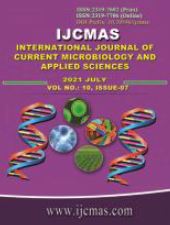


 National Academy of Agricultural Sciences (NAAS)
National Academy of Agricultural Sciences (NAAS)

|
PRINT ISSN : 2319-7692
Online ISSN : 2319-7706 Issues : 12 per year Publisher : Excellent Publishers Email : editorijcmas@gmail.com / submit@ijcmas.com Editor-in-chief: Dr.M.Prakash Index Copernicus ICV 2018: 95.39 NAAS RATING 2020: 5.38 |
The practice of rainwater harvesting in ponds and reusing the stored water for life saving irrigation of crops and also for domestic purpose is prevalent in India since ancient times. Rainwater of the NRCL farm drained out to outside due to lack of suitable water harvesting structures within the farm premises. The present study on productivity improvement through rain water harvesting and rechargeable volume of stored runoff water collected in different rain water harvesting structures of litchi based production system were carried out at research farm of ICAR-National Research Centre on Litchi, Muzaffarpur during 2017-18. Different water harvesting structures like ponds, trenches and deep furrows have been created as per the farm slope of litchi based catchment area adopting suitable land shaping techniques to store the rain water for multiple uses like cultivation of various crops and fish culture. Physico-chemical analysis of the soil from different catchment area revealed that organic carbon content of the farm soil found low to medium; nitrogen and phosphorus content were medium and potassium content was low. Rain water stored in different ponds showed the storage capacity of 1.45 to 2.50 million litre water per pond with cost of harvested water was Rs 68/1000 L during first year of pond construction and considering the 20 year life span of the ponds, the cost of harvesting water would be a negligible amount of Rs 7/1000 L. The stored water in different structures was mostly used for fish culture and makhana cultivation besides, life saving irrigation to newly plantation of litchi, banana and papaya. Vegetables grown on pond bunds were also irrigated during lean period. Total area of catchments excluding water harvesting structures area found to be 25.37 ha. The maximum area of 2.622 ha has been recorded under pond based water harvesting structure and only 0.41 ha area was under deep furrows system. Rechargeable capacity of runoff water in water harvesting structures revealed that the stored runoff volume vanishes by the end of December through evaporation and seepage/groundwater recharge processes. Maximum rechargeable volume of runoff water from the water harvesting structures was computed to be 30624.07 m3.
 |
 |
 |
 |
 |